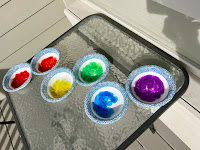The Blog of Phyz
High school physics education issues as seen by some American teachers: From content standards to critical thinking
Sunday, January 05, 2025
New Jersey Drones ... never forget
Saturday, March 23, 2024
Eclipse Pegboard 3.0
Sunday, December 03, 2023
SNL "Posters" - Marcello Hernández was cheated
Thursday, November 16, 2023
PSSC Film Archive posted on Reddit
The Physical Science Study Committee (PSSC) Films are a set of 53 films made in the late 1950 early 1960 for US high school physics. The films are also referenced in the Berkeley Physics Course, of which the 2nd book is the well renowned Electricity and Magnetism by Edward M. Purcell.While dated, the films are still educational and can bring some insight in various physical observations and phenomena. I personally like the Frames of Reference film.Unfortunately I could not find all of the films, thus the gaps. If you know other ones, please leave a comment. On the Internet Archive one can also find Italian dubbed versions. [u/SchoggiToeff on Reddit r/Physics.]
Thursday, October 27, 2022
Chicago’s Most Haunted - Undead Edition
When I came across a credulous local TV affiliate news item in 2006, I immediately turned it into a blog post. But the Internet is ephemeral, and sometimes I like to solidify a lesson idea.
The original videoclip has long since disappeared from the web. And I fleshed out my lesson architecture to maximize efficacy.
The bit that aired on Chicago’s CBS affiliate, and it was … disappointing. My lesson amplifies the weaknesses credulously glossed over in the puff piece.
I found it to be a worthwhile Halloween-adjacent classroom activity. Watch the segment and see if it doesn't raise your skeptical spider senses. The classroom discussion was always great fun. Many high school students have pretty good BS detectors, and the written assignment gives them permission to tear this segment apart.
The student document can be found here: Word | PDF
Sunday, July 24, 2022
Is a tape measure a constant force spring?
I recently came across a video of tape measures "racing" along a board of wood as they retract. Who doesn't love extending the tape as far as you can and recklessly letting it fly in? It obviously accelerates dramatically. Like any physics-minded person I got to wondering if the force is constant. How might we assess?
I'm home for the summer, a summer I desperately needed, and away from some of my usual tools. No probeware. No students to help. First I put a small bucket with a handle on a food scale from our kitchen. I extended the tape measure and used it to pull up on the scale. The force was somewhat constant, but not as steady as I would like. A force probe would have been handy to average many data points and see the force graphically.
Perhaps it would be simpler to measure acceleration, rather than measuring force directly. We could replicate the original video. But what about friction? I've also noticed that tape measures sometimes stick when used in this position. What if we pulled a cart of known mass and analyzed the video? The toy cars at my disposal were all too light—or had too much friction—to provide a motion that was slow enough and consistent enough to satisfyingly measure with the tools on hand.
But there it was staring me in the face: the air hockey table. I put the tape measure on its side, so that the weight of the extended tape doesn't cause it to rub as much against the tape (tape retracts more smoothly). Lego base plate floats beautifully on table. A few Lego bricks are placed on one end of the plate to hold the hook of the tape measure during retraction.
Monday, June 20, 2022
Heterogeneous Lab Groups
Thursday, June 16, 2022
Test Correction Mastermind
I do not indicate which items are incorrect, only the total number of items they answered incorrectly.
Wednesday, June 15, 2022
Test Correction Journal
Friday, May 06, 2022
Tangled Up With You
You got a heart but there's no way of knowing
Can see where you are but can't see where you are going
And I'm stuck here still
I'm tangled up with you
I know I deserve you
I know you're my savior
But when I observe you
You change your behavior
So I'm stuck here still
I'm tangled up with you
This whole world can be...
So uncertain
But you can bet that I'll still be hurting
When you say our wedding vows to somebody else
Well I've seen some things
I've been around
But darling there ain’t a finer thing that I've found
I'll always be so tangled up with you
I'll always be so tangled up with you
Eliza's Uncertainty - Voice: Eliza Shea, Bass: Misha Mullov-Abbado, Clarinet: Anthony Friend, Trombone: Vij Prakash, Guitar/Composition: Nick Goodwin






